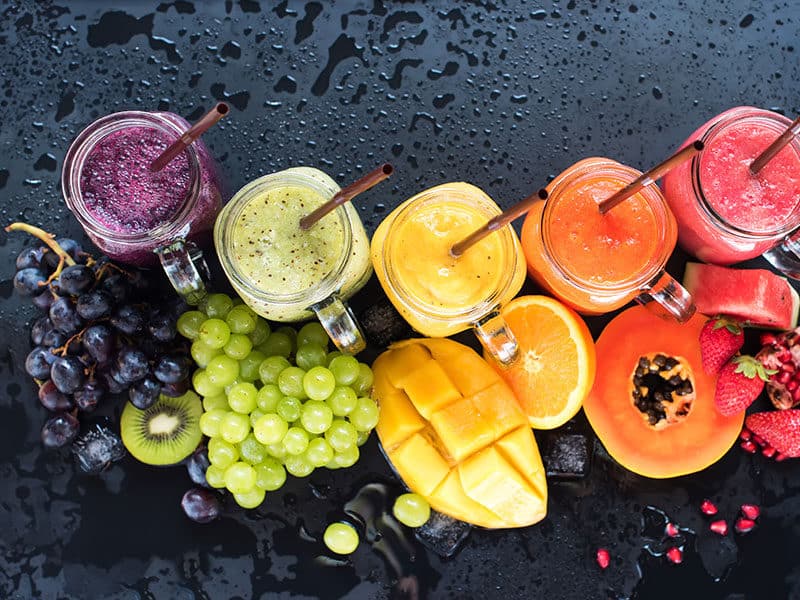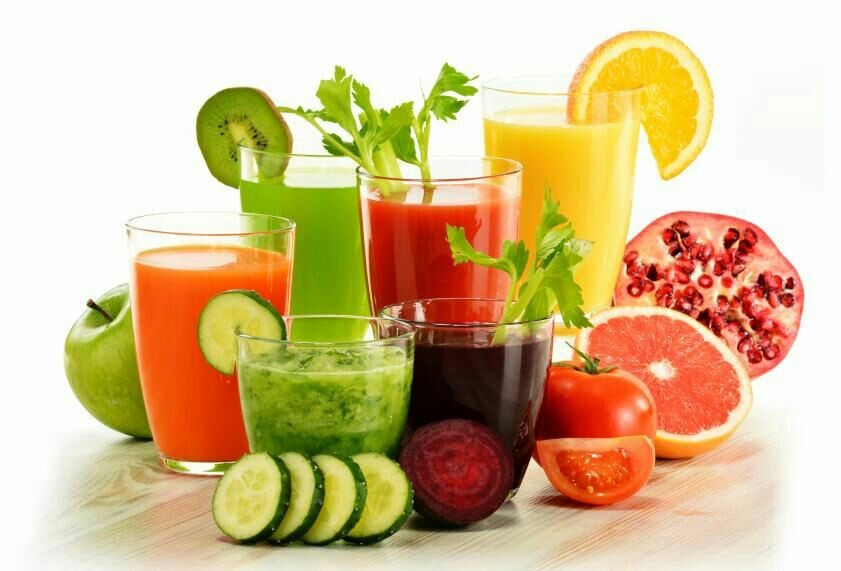
As a kid, I always cringed at the thought of eating fruits and green veggies. The only way my mother got me to eat my fruits and veggies was by juicing them. I am glad to share that this is one healthy habit or ritual that I can continue even to this day. Juice offers many life-enhancing health benefits, including a faster, more efficient way to absorb immune-boosting nutrients found naturally in fruits and vegetables.

For regular folks like you and me, getting enough veggies and fruits in our meals can be a challenge. If you too don’t enjoy eating fresh fruits and vegetables, consuming their juices may be a fun way to add them to your diet and even try fruits and vegetables you normally wouldn’t eat. So, how does juicing help us? Is it better than whole fruits?
What is Juicing?
Juicing is the process of extracting juice from plant tissues, such as fruits and vegetables. It can be of different types, depending on the kind of juicer you’re using. The two most common techniques are fast juicing and slow juicing.
Fast juicing is the most common juicing method. It is achieved using cheaper centrifugal juicers that spin at high speeds to pulverize the fruits or vegetables and use centrifugal force to separate the pulp from the juice. These juicers spin at a fast speed, producing heat, which often destroys certain enzymes or nutrients in fruits and vegetables.

Slow or cold press juicing is achieved using masticating juicers, which are costlier. These juicers operate at lower speeds and gently compress fruit and vegetables to 'squeeze' out their juice. They ideally do not produce heat; hence, the word cold press is used. This technique helps preserve more nutrients and enzymes than fast juicing.

No matter which method you prefer, it is important to understand the pros and cons of juicing. Read on!
How does Juicing Help Us?
Less is More
You don’t have to chew your vegetables around the clock to lead a healthy lifestyle. Juicing can be a savior, as it removes the insoluble fiber present in whole fruits and vegetables. While fiber is an important part of a healthy diet, removing the insoluble fiber allows for increased absorption of specific health-promoting phytonutrients, including enzymes, while the soluble fiber remains in the juice. By removing the fibers and consuming fruits and vegetables in liquid form, you can absorb more nutrients by consuming a much lesser volume of them.

Variety is Key
Different kinds of vegetables and fruits enrich our bodies with different essential nutrients. Juicing helps you incorporate a variety of vegetables or fruits all at once. Eating 1-2 vegetable preparations during lunch or dinner is a daunting task for most of us. However, with juices, you can combine 5 to 6 different vegetables per day, which may include dark leafy greens or cruciferous vegetables. This allows you to add more variety to your juice, along with more nutrients.
A Healthier Alternative
Most of us don’t generally follow a healthy diet on a day-to-day basis. Juicing can be a perfect solution to this. It is the fastest and easiest way to obtain nutrients from the vegetables you’d rather skip at dinner. You can always have a glass of vegetable or fruit juice along with your meal to compensate for the deficits of the day. However, most commercially available juices are processed and lacking in nutrition, whereas freshly juiced fruits and vegetables are loaded with an abundance of vitamins, minerals, and phytonutrients. Hence, always try to consume 100% real fruit and vegetable juices.

However, not all is good about juicing. Like all things in the world, juicing isn’t perfect and has its share of drawbacks and considerations.
Less Fruit, More Veggies
Avoid adding too much fruit to your juice concoctions because drinking lots of fruit juice elevates your blood sugar levels quickly. It can also increase the risk of diabetes and obesity due to its high sugar content.

Instead of capitalizing on fruits, use them smartly so that you can strike a healthy balance of fruits and vegetables in your juice concoctions. For example, you can use fruits to mask the strong flavor and taste of certain vegetables. You can also add a piece of cucumber to your green juice. It dilutes the flavor and is great for increasing the amount of juice that you drink.
Fiber is Essential
Juicing removes insoluble fiber from fruits and vegetables. Insoluble fibers present in whole fruits and vegetables provide bulk. Bulking fibers absorb water as they move through the digestive system, easing defecation. They are also important for maintaining healthy gastrointestinal health.

It also helps you feel full without eating too much, which can be an added advantage for people wanting to shed a kilo or two. Hence, add more fiber-rich foods to your meal, such as dried beans, oats, lentils, broccoli, Brussels sprouts, citrus fruits, apples, strawberries, peas, and potatoes.
Juicing can be Expensive
As you know by now, juicing packs in a whole lot of nutrients in a relatively small volume. The quantity of fruits and vegetables used to make a glass of juice is not as filling and nutritious as eating them whole. Moreover, some of the nutrients and fiber present in the peels are lost in this process.

Conclusion
In conclusion, juicing can be a great way to boost your intake of essential nutrients, especially if you find it challenging to eat enough fruits and vegetables. It offers a quick and convenient way to enjoy a variety of produce, but it's important to remember that juicing removes insoluble fiber and can be high in natural sugars if you rely too much on fruits. To get the most out of juicing, balance your ingredients with more vegetables and include whole fiber-rich foods in your meals. When enjoyed in moderation, fresh juice can be a healthy addition to a balanced diet.



.png)


